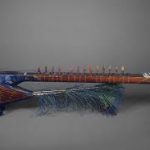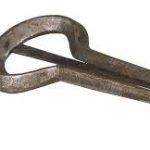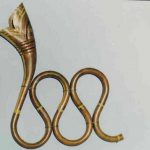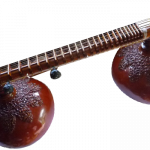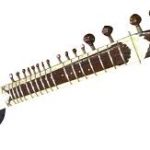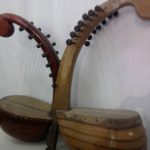India has a rich culture in music and boasts of innumerable indigenous instruments. With the advent of technology and modern electric instruments, these old instruments are fading away with some instruments already being found only in museums.
Considered to be the mother of all stringed instruments two centuries ago, there are hardly any Rudra Veena players anymore. Made of wood or bamboo, the strings produce subtle and soft music which seems to have lost its charm in the modern age. Though it is known for its meditative sound and use in classical music, both the Rudra and the Saraswati Veena have lost its following also due to it being an expensive instrument. Today very few artists like Bahuaddin Dagar, Jyoti Hegde and Hindraj Diwekar still play the instrument. Similarly the Nagfani or the Serpentine Horn was found vastly around Gujarat and Rajasthan but is now on the verge of extinction and is only sparingly used in rituals in Uttarakhand or in traditional ceremonies due to its serpent shaped head which is associated with the serpent coiled around Shiva’s neck thus invoking power.
Mayuri, a peacock shaped stringed instrument was very popular in the nineteenth century in the Indian courts. The metal and wood body played with a bow is rarely used but it has seen a revival in recent years. It is said that is was invented by the sixth Sikh Guru Har Gobin and it is being used by Sikh musicians these days to play devotional music. A tiny instrument made of wrought iron, the morchang produces a beautiful melody when played using the mouth and left hand. Once very popular in Rajasthan and widely used in folk music, it is very difficult to find these days. This percussion instrument was also used in Carnatic music in the 20th century and even by R.D. Burman and S.D. Burman in Bollywood but is now pretty much extinct.
The Yazh is an ancient instrument and was immensely popular in its day. A string instrument, it was considered to be with one of the sweetest sounds. Also known as the Vil Yazh named after a mythological animal, Yali and was shaped like it. Once very popular in Tamil Nadu, it is now found only in museums. The Ejuk/Tapang is an Assamese instrument and is made from Tita Lau, an indedible gourd. Its cultivation is considered inauspicious and because of this, the Ejuk is dying a slow death. Ejuk Tapung is primarily used by the Mishing Tribe of Assam and resembles a flute but has a unique sound.
Hailing from Manipur, the Pena is made of bamboo and coconut. All the folk songs of Manipur are attributed to the Pena. This mono string instrument is dying out and only 145 people know how to play it today. It is said to be the traditional instrument of the Meitei community and is only played during their festival Lai Haroba. Also known as a bass sitar, the Surbahar, is a string instrument from North India used in classical music. It was developed way back in the eighteenth century and was revamped in the twentieth century. Though you will still find surbahar players in the country, Imrat Khan being a well-known name, the instrument is fading away.
Sustaining ancient musical instruments is not easy and with newer forms launching everyday, there is a lack of teachers for them as well. Few instruments will probably always be evergreen but there are some which might not be saved.
